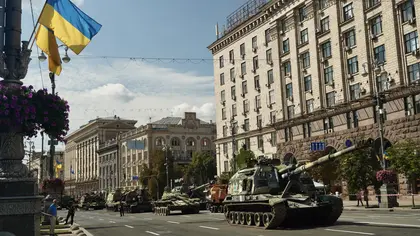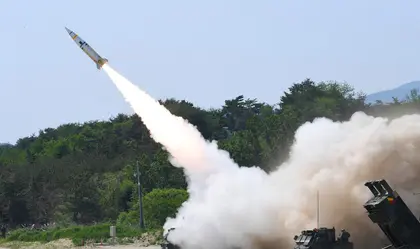Except for all the smashed Russian army combat vehicles in the middle of the street, the sidewalks of Kyiv’s main street the Khreshchatyk are peaceful and pleasant place, with couples walking hand-in-hand, grandparents pushing strollers, and entire families out for a walk and a nice ice cream.
More than a few of the Russian heavy weapons parked on the Khreshchatyk to mark National Independence Day, silently, tell graphic stories of violent destruction and die-hard Ukrainian resistance.
Mostly, the summer crowd didn’t seem to notice, but they seemed happy to check out the busted enemy “tanks.” There were a lot of them.
In a calculated “screw-you” to the Kremlin, Ukraine’s government has trucked in dozens of captured and destroyed tanks, artillery pieces and armored personnel carriers once owned by the Russian army, that are now the property of the Armed Forces of Ukraine (AFU) and parked it all up and down a little more than a half kilometer of the acacia-lined Khreshchatyk.
“All this weaponry is a kick to Russia's face,” 19-year-old student Sofia tells Kyiv Post. “It is a humiliation for them.
“Because here in the centre of Kyiv – which they wanted to capture in a few days – now there is all their broken equipment.”
Semi-trucks and cranes were still hauling in the ex-Kremlin equipment on Tuesday and Wednesday.

Inside the South Korean Weapons Factory That Could Supply Kyiv
A preliminary Kyiv Post count of Russian military equipment parked on the Khreshchatyk totaled 10 Russian tanks, 15 self-propelled artillery pieces, 3 anti-aircraft missile systems, 6 armored personnel carriers, 3 armored cars, two rocket artillery pieces, 4 infantry fighting vehicles, 3 light tracked personnel carriers, and an R-77 air-to-air missile – a bleeding edge weapon touted by the Kremlin as superior to anything NATO owns. It was broken into two pieces.
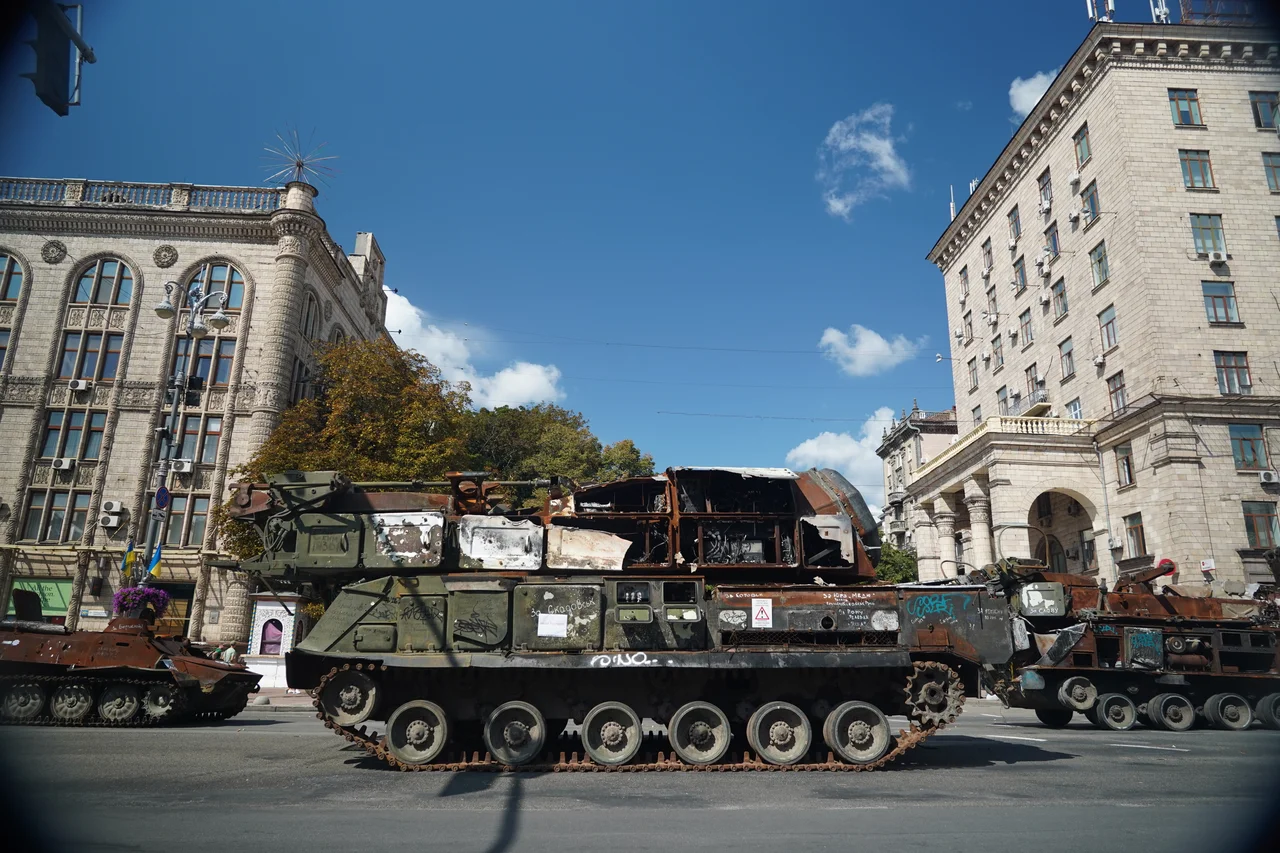
The hulk of a Russian BUK M1 (NATO designation SA-11 Gadfly) anti-aircraft missile carrier stands on display in central Kyiv. PHOTO: Anya Korzun
A T-72BV, a Russian main battle tank forming the backbone of the Kremlin’s armored forces, was parked right next to central Maidan Square and told a probable story of a Ukrainian heavy artillery shell or anti-tank missile direct hit on the front deck, and catastrophic explosion wrecking the driver’s position and ripping boxes of reactive armor from the front of the turret.
Someone, most likely AFU soldiers involved either in destroying or capturing the vehicle, wrote “For Berdyansk” and “For Tokmak” on the side of the tank, in a possible sign the T-72 was taken out on the war’s southern front.
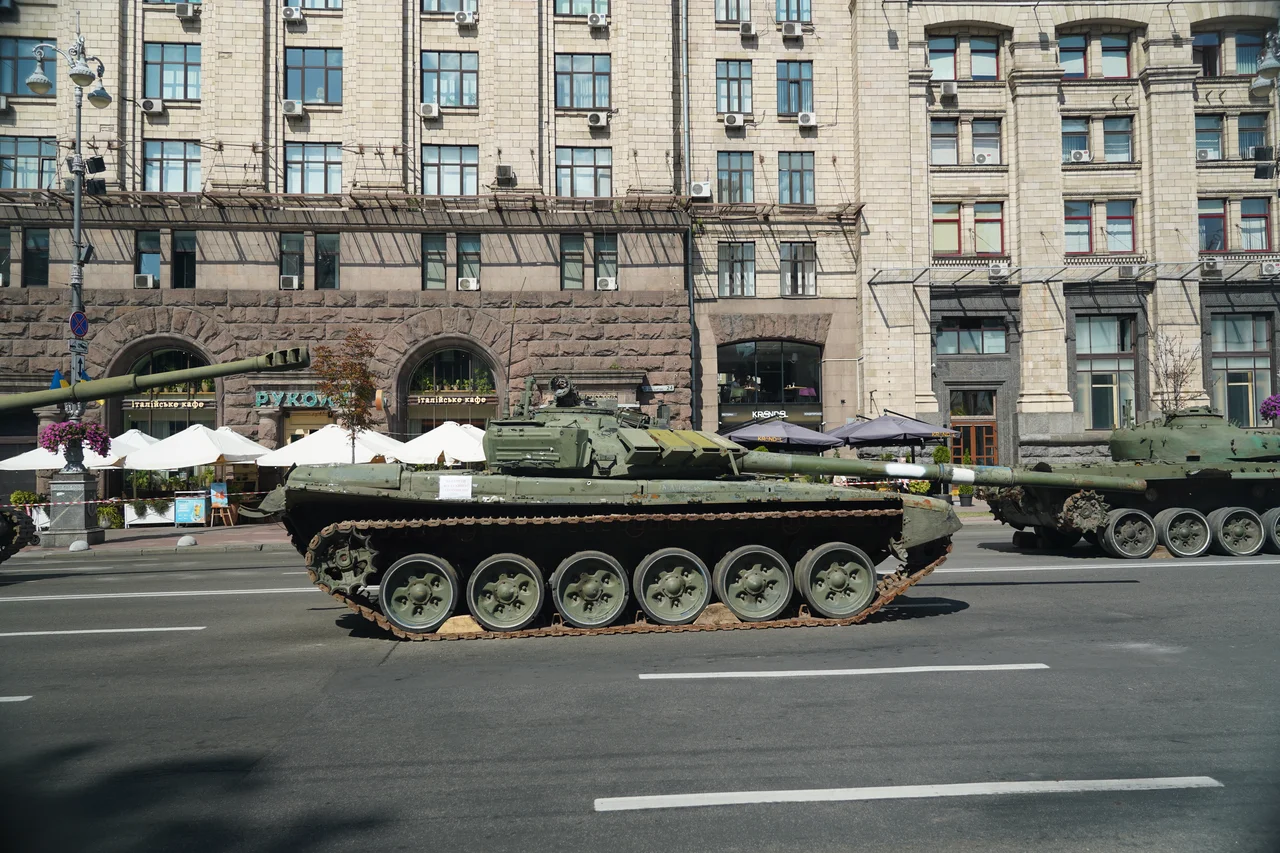
Captured Russian tanks including a late-model T-72BV (center) stand on display in the Ukrainian capital Kyiv. PHOTO: Anya Korzun
“We are happy that our guys were able to destroy all this,” 65-year-old Raisa tells Kyiv Post.
“So many lives were saved because it was destroyed. But a lot of our guys lost their lives and we are very sorry and wish our soldiers to return home alive.
“You wonder how this whole armada crawled towards us and how our people stopped it. If it had not been destroyed, more people would have died."
A late-model Russian T-80 tank, by design a more capable and better-protected weapons system than the mid-Cold War T-72, was parked a few meters away.
It looked to have been wrecked by deliberate artillery bombardment, with shell splinter damage on its right side, caterpillar tracks snapped, and signs of a fire in the turret and back engine deck.
Someone had written the names of battlefield towns in the southern and eastern sectors, some held by the AFU and some lost to the Russians: Hulyaipole, Marhanets, Bakhmut, Snizhne, and Lysychansk.
Also scribbled on the tank hull were the names of two cities under Ukrainian control since the start of the war and currently under near-daily Russian missile bombardment: Odesa and Mykolaiv.
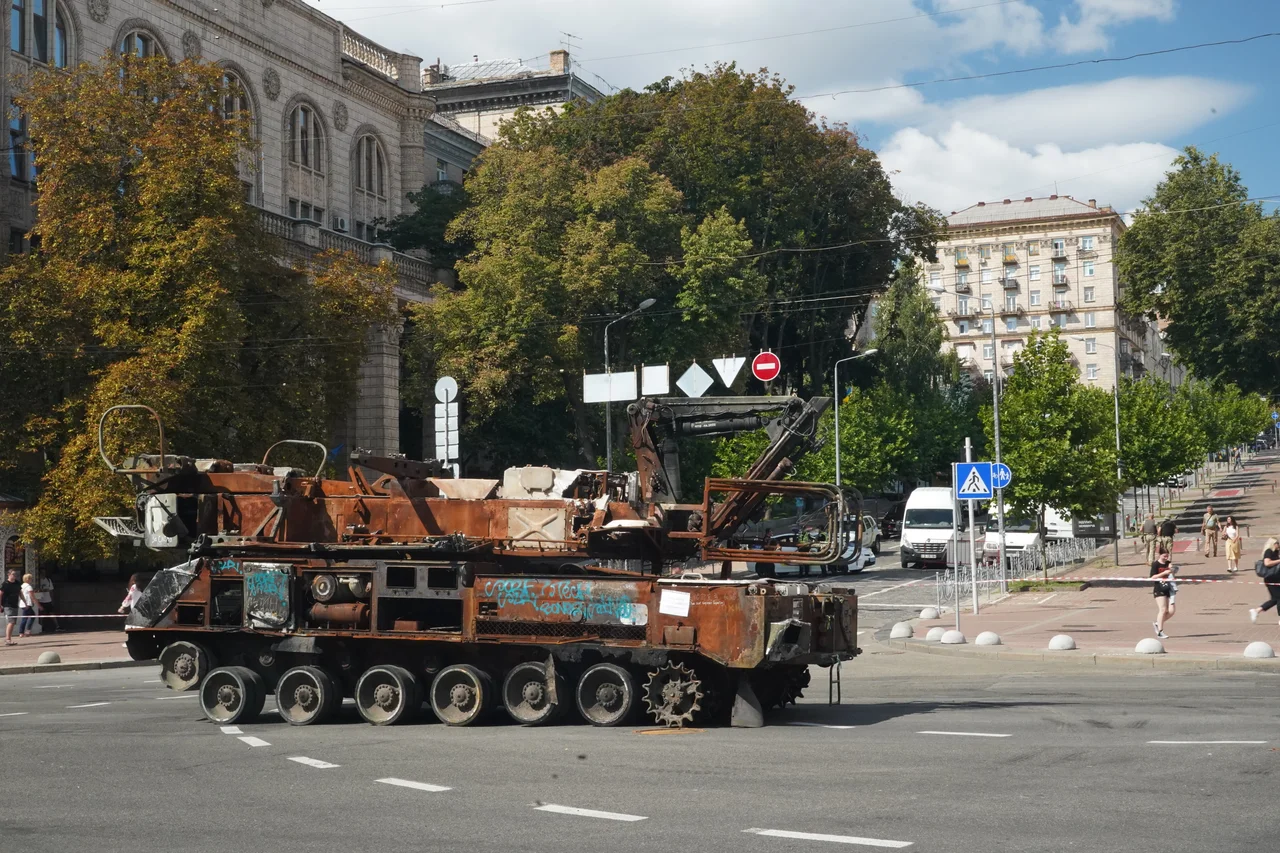
The hulk of a Russian BUK M1 (NATO designation SA-11 Gadfly) anti-aircraft missile carrier stands on display in central Kyiv. PHOTO: Anya Korzun
“The damaged equipment clearly indicates the price we have to pay for independence,” 68-year-old Anatolii tells Kyiv Post.
“Freedom is the most precious thing a person has.”
Further down Khreshchatyk, not too far from the MacDonalds, an early model T-72 showed heavy signs of wear on the recoil section of the cannon barrel, probably from continuous firing in battle.
The turret and forward hull had damage from an explosion close above the vehicle, and fire had burnt the top of the tank down to raw metal.
A bit further on, a nearly intact T-72 testified to the acquisitive instincts of the AFU’s battlefield mechanics: someone had stripped the turret and front hull of every single reactor armor block including locking nuts, plus the antenna, equipment carrier “bustle” boxes and running lights.
The tracks and road wheels on that tank showed almost no wear.
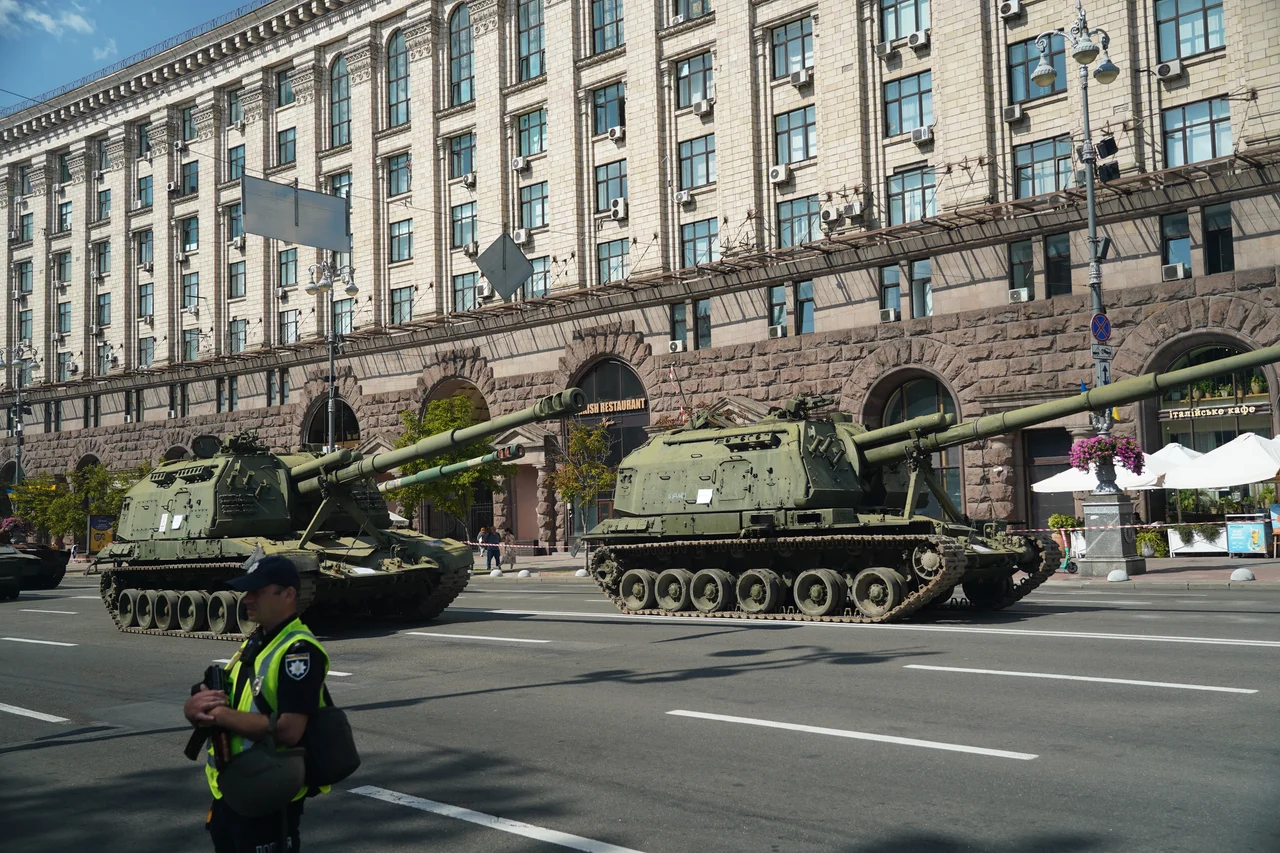
A Ukrainian policeman stands perimeter guard next to a pair of Russian 2S19 self-propelled howitzers parked in central Kyiv. PHOTO: Anya Korzun
Authorities either by design or what was available placed more artillery than tanks on the Khreshchatyk. Like the T-72s and T-80s, most of the Russian cannons on display showed clear signs of having been hit by some kind of explosion, probably a shell, and then in most cases set on fire.
The interior of a 2S1 122mm self-propelled howitzer was completely burnt out, but chipped, dull green, flaking paint still intact on some of the hull looked like it had been repainted for decades.
Graffiti observable include “Polohy” (a battlefield village in the Zaporizhzhia region), a unit emblem from some branch of the Azov group, and the statement, in Ukrainian, “No Peaceful Resolution.”
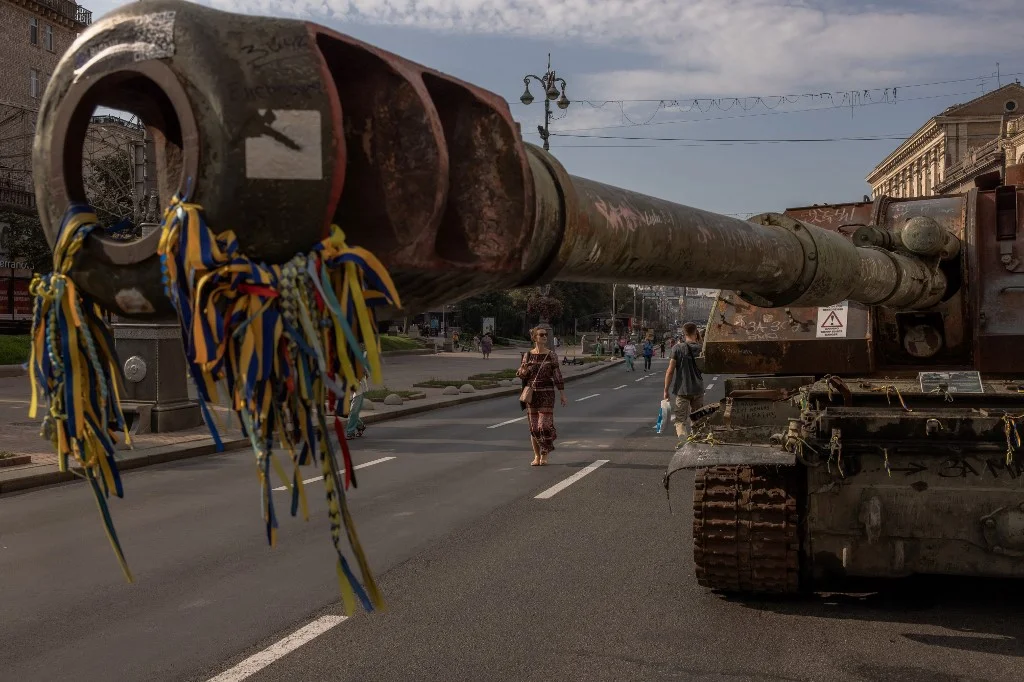
Ribbons in the yellow-and-blue Ukrainian national colors hang from the muzzle of a Russian 2S19 howitzer. PHOTO: AFP
Another Russian weapon someone clearly wanted the world to know had been forcibly transferred from Russian to Ukrainian army control was a MSTA-S 2S19 152mm self-propelled howitzer sporting factory green paint and outwardly in relatively good condition, but with some splinter damage to the side hull and the cannon recoil cylinder shows signs of heavy firing.
The left side of the tank-like vehicle was covered with at least 30 signatures, the place names Chortkiv, Ternopil, Soroky (all west Ukrainian towns), and on the backside of the vehicle someone has painted “TRO 105 Battalion”, the name of the volunteer, territorial defense unit raised mostly in Ternopil.
Oleksandr, a 53-year-old lawyer, tells Kyiv Post the wrecks are a useful reminder for those living far from the frontlines.
“Destroyed Russian weaponry demonstrates that something is happening here — a reminder,” he says.
“Because Kyiv is already protected, and it might be the feeling that everything is over, so it is a reminder of what is happening here – that we are far from being safe, and we are actually at war.”
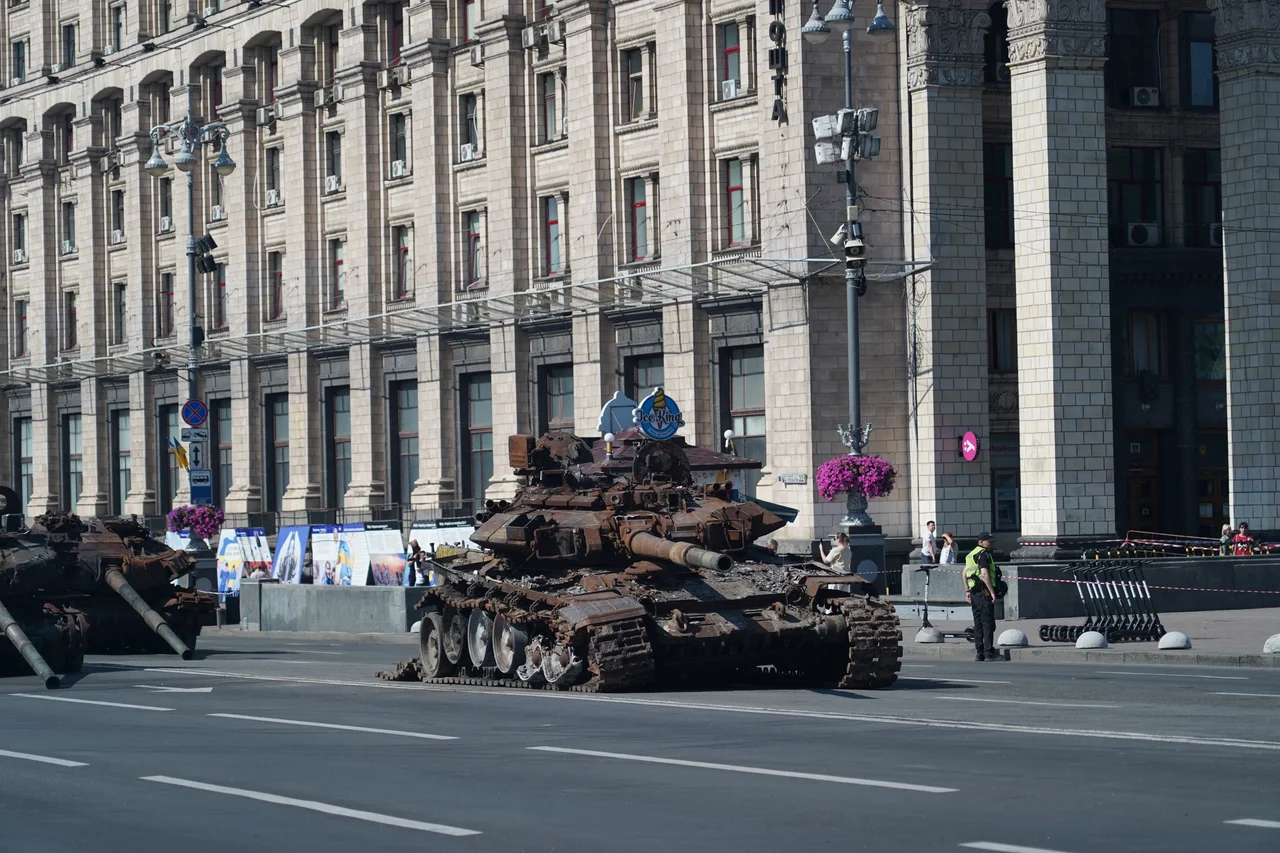
The hulk of a destroyed Russian T-72 tank stands on Kyiv’s central Maidan square. PHOTO: Anya Korzun
One of the most violent stories probably not noticed by the families strolling along the Khreshchatyk was visible in a Russian armored truck called Kamaz-63969 Typhoon MRAP parked next to the TSUM department store.
Moscow has billed the Kamaz as the world’s best military truck equipped with unique suspension and engine tech developed from winning Russian experience in Paris-Dakar races.
The Typhoon’s front cab was shattered, its right cab door was demolished, and in the frontal arc the truck’s bulletproof glass was wrecked and frequently shot through.
Gouges and scores from dozens of heavy machine gun bullet strikes – almost certainly .50 caliber – were ripped into the truck’s armor all around the driver’s position.
Underneath the wrecked driver’s position on the Kamaz’s side someone had written in white chalk “Bohdanivka” – the scene of Russian murders and other atrocities against civilians living north of Kyiv in late Feb. and early March 2022.
"If this equipment is here, those who used it are already dead," 22-year-old student Andriy tells Kyiv Post.
"And that's good."
You can also highlight the text and press Ctrl + Enter


